Like everywhere in Vietnam, Hoi An sits within a cluster of rice fields. Across the country, rice is an integral part of Vietnamese culture, and part of the national staple diet. Vietnam is the world’s seventh-largest consumer of rice – it’s a relatively small country compared to some of its neighbors – and in 2019 was the world’s fourth-largest exporter of the grain after India, Thailand and the United States.
The rice-growing cycle is continuous, and depending when you visit Hoi An, you’ll be able to pass-by or cycle through lush green fields, fields flooded with water, or empty fields recently-harvested. The rice growing process is an alluring one, with a reliance on traditional methods, employing millions and being consumed at almost every mealtime, by locals and tourists alike.
Before you hire a bike and disappear off into the tranquility offered by Hoi An’s rice fields, find out everything you need to know about this fascinating foodstuff and integral part of Vietnamese culture. Know a little about this glorious grain and you’ll never look at the rice on your plate in quite the same way again!
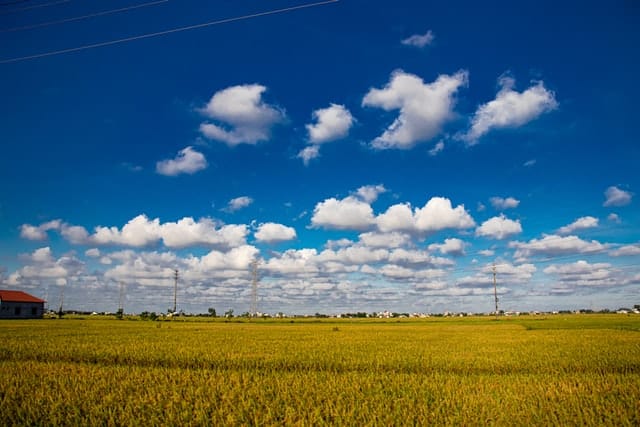
- Where is Rice Grown in Vietnam?
- When is the Season for Growing Rice in Vietnam?
- A Brief History of Rice Growing in Vietnam
- Rice Folklore in Vietnam
- What Rice is Grown in Vietnam?
- Food
- What Rice Dishes Can I Find in Hoi An?
- Rice as a Vietnamese Food Staple
- Look Out for the Ducks!
- The Important Role of Water Buffalos
- FAQs
Where is Rice Grown in Vietnam?
You’ll find rice fields everywhere in Vietnam, from the far north to the deep south. The mountainous region of Sa Pa is famous for its rice-growing terraces, where level ground is cut into the mountainside in order for rice to be grown. It’s an inspired solution from those living in extremely tough conditions, which has created some of the most scenic vistas you can find anywhere in the world. It’s estimated that rice fields make up over three-quarters of Vietnam’s agricultural land.
The real heartland for rice growing in Vietnam can be found in the Mekong Delta, sometimes referred to as the country’s ‘rice bowl’. Here, as much as 80% of the population is employed in growing rice, and the region grows around half of Vietnam’s total crop. It’s also essential for feeding the Mekong people, who get three-quarters of the vitamins they need from their rice harvest. Vietnam is not alone in its reliance on rice as a major food source – as much as 50% of the global population uses rice as the main food staple of their diet.
Wherever you travel in Vietnam, a rice field will be just around the corner. Take a short cycle ride from Hoi An into the countryside and you’ll soon be winding your way through roads and paths that dissect rice fields. A long stretch of Hai Ba Trung – the long road connecting the Old Town with An Bang Beach – cuts through acres of rice-growing land, with green vistas all around, as far as the eye can see. Our scenic cycle route to An Bang Beach is a good introduction to the rice fields of Hoi An.
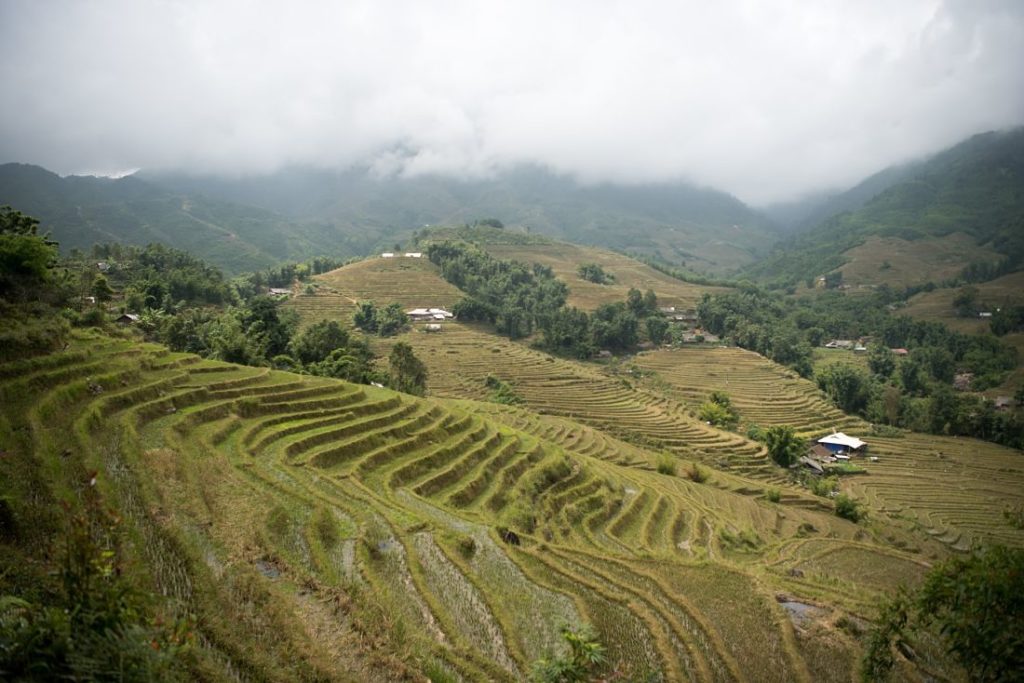
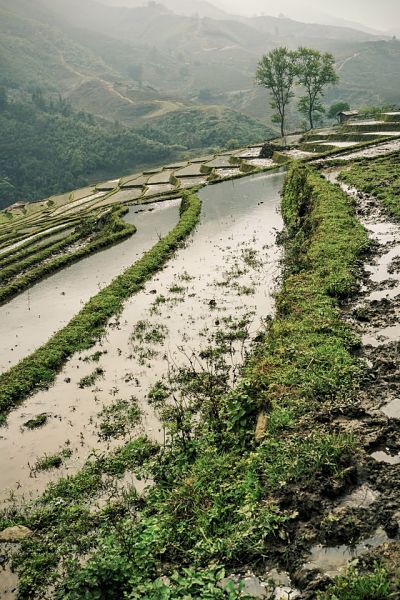
When is the Season for Growing Rice in Vietnam?
You’ll see the rice fields in various states, depending on what time you visit Vietnam, as well as which part of the country you’re visiting. Fields are ploughed with buffalos or machines then flooded with water using irrigation canals which can be opened and closed when water is required. Seeds will be sown and quickly resemble long grass, before morphing into lush green pasture.
Towards the end of the crop’s cycle, the color will change to something resembling a wheat-field. After harvesting, the unused parts of the plant are burned, leaving fields covered in charcoal – this actually serves to nourish the soil, ready for the next planting season. If you’re in Vietnam after harvesting, you’ll also see rice left out on pathways and roads to dry, before bagging.
The center of Vietnam has two rice-growing seasons, whereas the south – principally in the Mekong Delta – usually has three. The number of seasons is partially dictated by soil conditions and also by the weather. Although the south has a rainy season, it’s not normally as intense as that experienced by the center, and is mainly free from typhoons. The cycle from planting to harvesting takes around three or four months, and throughout this time you’ll see farmers tending to the fields, delicately removing weeds and keeping pests at bay. Hoi An’s two harvests usually occur in May and September.

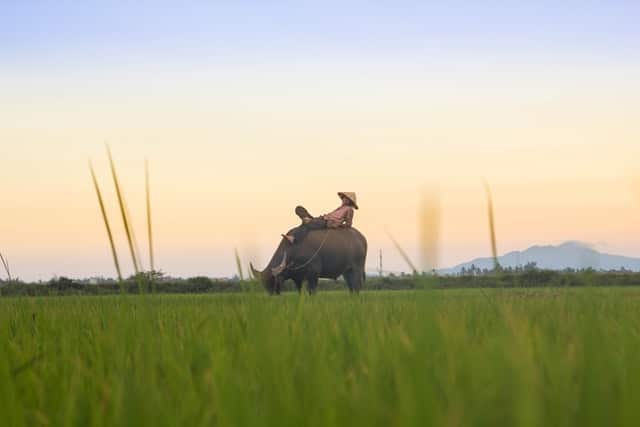
A Brief History of Rice Growing in Vietnam
It’s estimated that Asian rice was first domesticated as a crop around 10,000 years ago in China, close to the Huai and Yangtze rivers. With humans as a hunter-gatherer species morphing into farmers, word gradually spread and cultivation of the crop followed the path of these rivers over the next few thousand years.
Rice farming in Vietnam was undertaken by smallholders as a source of food, up until the French colonization of the country. The export market in the Mekong Delta was developed by the French as a means of funding their colonial costs. The huge canal system that runs through the rice fields here was introduced by the French as a means of increasing production and the number of harvests.

Although colonization dramatically increased rice production in the country, it was also responsible for a major famine towards the end of the Second World War. French-colonized Vietnam was occupied by Japan, and both sides hoarded rice in order to feed their own troops. French allies attacked the economic structure of the country, bombing roads and affecting the movement of food around the country. Two years of famine – from 1943 to 1945 – were the result, resulting in an estimated two million deaths of Vietnamese people. The subsequent wars against the French and US did nothing to make rice production in Vietnam any easier.
Following independence, limits were placed on individual rice consumption, in an attempt to ensure that no one grew hungry. The lack of a financial incentive to grow large amounts of the crop further slowed down rice as an industry in Vietnam. Production did not take off until the mid-1980s, when farmers were given the rights to grow and sell their own rice. As a result, Vietnam became a player in the export market and began enjoying the successes it still enjoys today.
Rice Folklore in Vietnam
Like many cultures, Vietnam has its own myths, legends and folklore, including a tale on the origins of rice growing. Many centuries ago, rice was not grown but simply arrived, following prayers for sustenance. After prayer, rice would be sent to each house in the form of a large ball. On one occasion, a lady was busy doing household chores when her family’s rice ball arrived. The ball hit her sweeping brush and shattered into pieces. This unfortunately spelled the end of the heavens offering rice and meant the Vietnamese people had to grow it instead.
What Rice is Grown in Vietnam?
When eating rice in Vietnam, you may not realize that you could be eating one of over 1500 varieties grown in the country. Traditional rice crops are still grown but modern farming methods have allowed a huge number of newer crops to thrive, which at one time would’ve been too labor-intensive to sustain. Farmers will grow different varieties for different purposes – some to satisfy particular markets, others depending on soil types or a personal preference for flavor. White rice is brown rice with the husk and bran removed, which give brown rice its source of fiber.
Food
Rice is a staple food in Vietnam and often eaten with every meal by local people. Many dishes have rice as a principal ingredient, and steamed rice is usually a center-piece to every meal, accompanied by vegetables, tofu, meat or fish.
Many noodle varieties are made from rice flour, and you’ll find many soups have rice added too, so you’re often eating a source of rice in Vietnam even if it doesn’t appear so! Rice crackers – vaguely similar to an Indian poppadum – are a staple with many dishes, and rice is also used in ingenious ways in sweet dishes, puddings, and drinks. You’ll see rice milk sold on the street and in shops, some beers are made from the rice grain, and rice wine – a strong liquor – has been made in Vietnam for centuries.
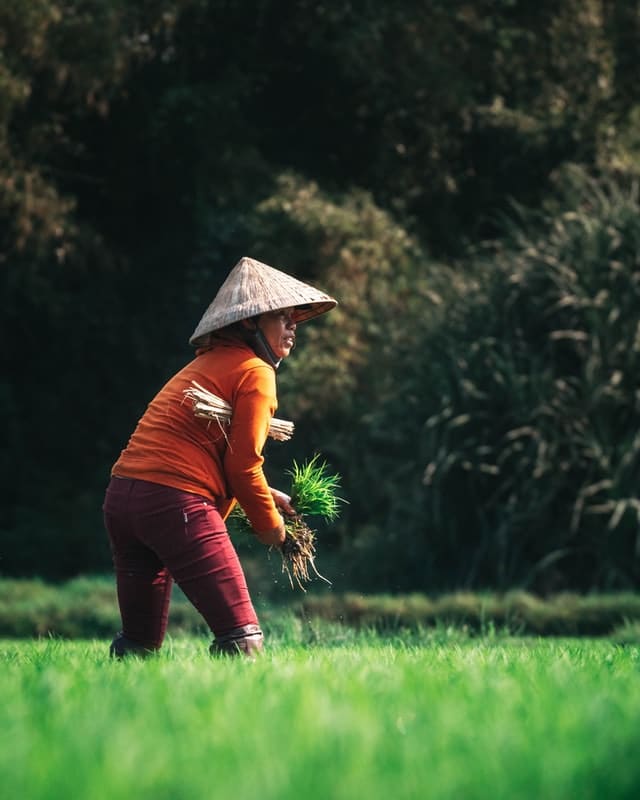
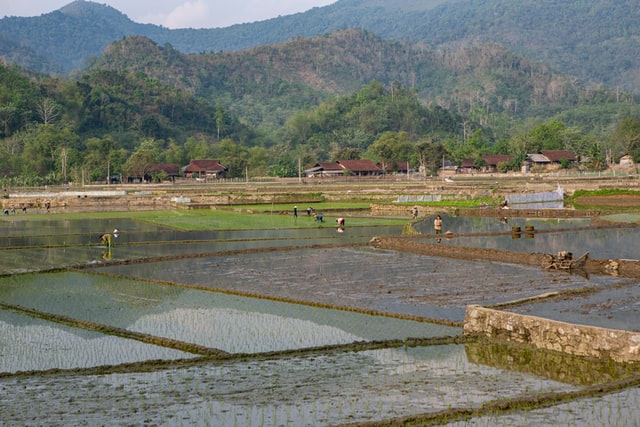
What Rice Dishes Can I Find in Hoi An?
Many regions of Vietnam have their own signature dishes, and Hoi An is no exception. Here are a few to look out for – beyond com ga, rice is used as a principal ingredient, rather than being simply steamed or fried. Vegan versions of all these dishes are readily available in the Old Town and beyond.
Com Ga (Chicken Rice)
Rice colored with turmeric and served with shredded chicken, Vietnamese coriander, pickled onions and carrots is one of Hoi An’s must-try dishes. Add a dollop of chilli jam and a squeeze of lime, mix well together and tuck in!
Banh Xeo (Vietnamese Pancakes)
Savory pancakes made from rice flour and coconut milk then colored with turmeric, banh xeo are usually wrapped in rice paper along with beansprouts, salad, meat, seafood or vegetables. Once you’ve got the hang of the rolling process, banh xeo can be dipped in a sauce, often made from peanuts. One of Hoi An’s most moreish foodstuffs, banh xeo make a wonderful meal at any time of day.
Banh Bao Bac (White Rose Dumplings)
Made from a rice flour dough and then filled with meat, seafood or vegetables, banh bao is named after the rose flowers they resemble. A delicious starter to any meal, all the white rose dumplings in Hoi An are made by one family, who supply all the restaurants that sell them in the area – truly exclusive!
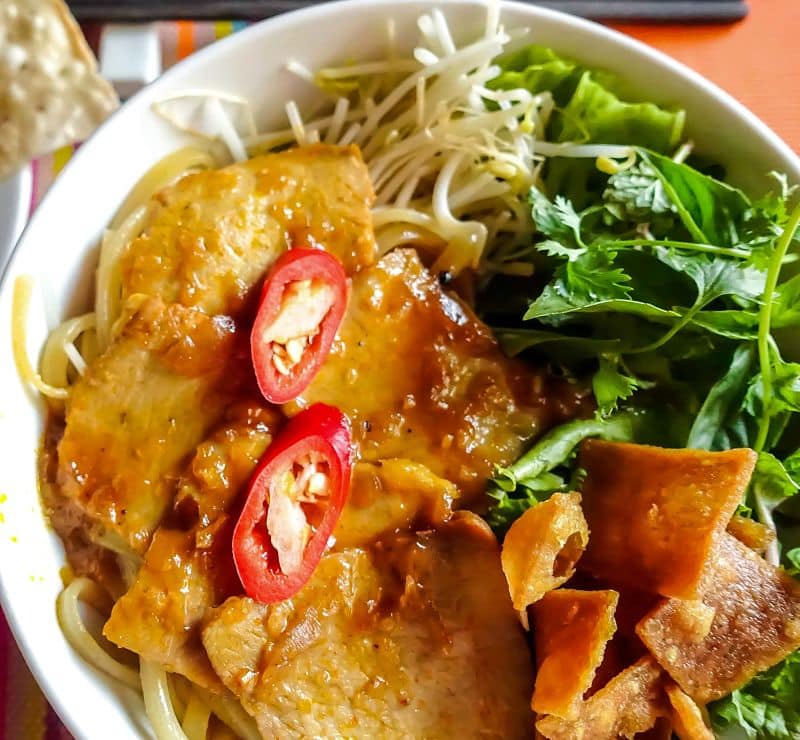


Cau Lao (Special Hoi An Noodles)
A noodle dish served with barbecued meat, salad and beansprouts, Cau Lao is only made by a handful of families in Hoi An. The super-thick and chewy noodles can only be produced using water taken from specific wells in the area. Nothing says ‘Hoi An’ quite like Cau Lao!
Banh Dap (Rice Crackers)
Found on Cam Nam Island, Banh Dap is a soft rice cracker spread with chopped onions and mung bean paste, eaten between two crispy rice crackers. It’s often served with fish sauce and washed down with a cold beer or two.
Rice as a Vietnamese Food Staple
In line with half the world’s population, rice in Vietnam is a food staple. Successive governments have encouraged the increase in rice growing throughout Vietnamese history, firstly to feed its people and secondly as an export product. Vietnamese rice is sold to other Asian countries, as well as nations in the Middle East and Africa. It’s long been a major source of income to the Vietnamese economy.
Take away rice from Vietnam and the whole population’s food security is in great danger. During the country’s lockdown due to the Covid-19 pandemic in April, free rice banks were set up across cities and towns so the country’s population did not go hungry. In modern times, Vietnam has grown to become one of the world’s top five rice-exporting economies.
Growing rice is sadly not a lucrative business for farmers. The average smallholder may only earn around 2m 400K VND (100 USD) per month for their product – about a fifth of the money earned by coffee growers. Given the small profits at stake, the failure of just a single crop can have devastating consequences on a family’s livelihood. As a result, each farmer works incredibly hard to ensure each crop is a success, forever tending to their fields to remove invasive plant and insect species, and keeping their rice healthy. Wherever possible, rice farmers diversify by growing fruit, vegetables and other crops, if the size of their land allows.
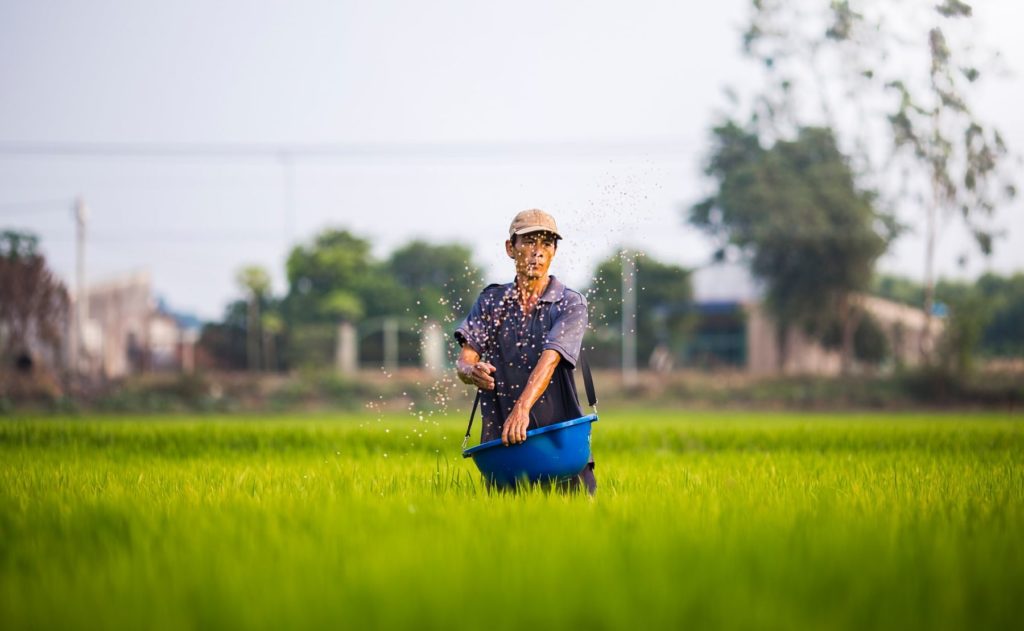
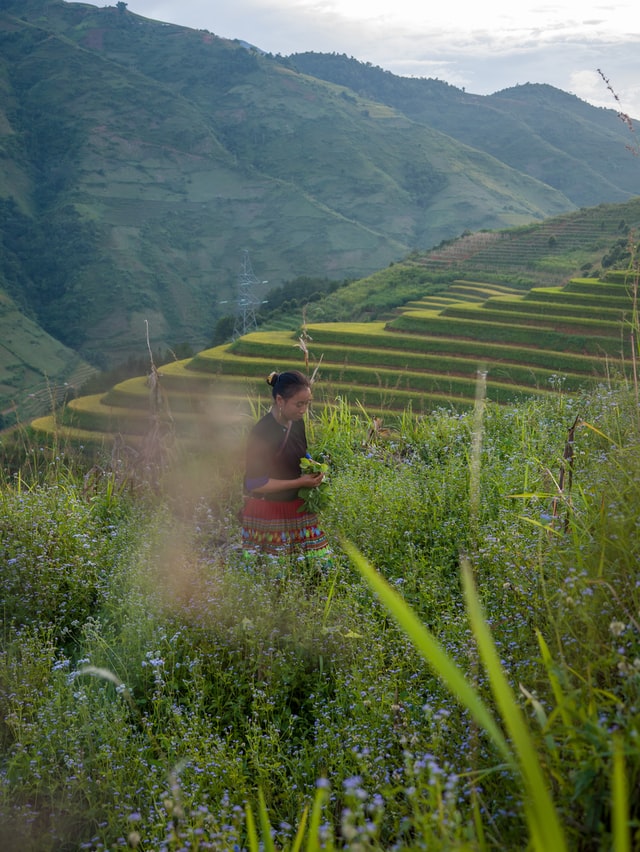
Look Out for the Ducks!
Gaze out over rice fields at different times of the cycle and you’ll often see ducks wandering around. They’re not just there for a jolly day out, but actually fulfill a vital role in keeping a crop healthy. Ducks will help with weeding, and eat many of the pests that can decimate a rice field. Their manure also acts as a natural fertilizer, and their presence helps farmers cut down on using pesticides and other chemicals. Ducks have been the rice farmer’s friend for centuries – sometimes the old ways really are the best!
The Important Role of Water Buffalos
Water buffalos are a common sight in Vietnamese rice fields, and despite their slightly-fearsome appearance, they’re domesticated and very placid creatures. They’ve been used to help the rice cycle for centuries, due to their mainly-grass diet, tolerance for both heat and rain, and ability to plough large fields quickly.
A mixture of buffalos and machinery are used for ploughing purposes in some parts of the country, and you’ll always find buffalos on higher ground – they can plough the slopes that machinery simply cannot reach.
FAQs
How much rice does Vietnam produce?
Vietnam’s exported 6.5 million tons of rice in 2019.
What countries does Vietnam export rice to?
Vietnam exports rice around the world, with the biggest importers being China and the Philippines. A large proportion of the country’s export market also goes to Africa.
When did humans start eating rice?
Humans have been eating rice for around 10,000 years. The rice grain was cultivated from different grasses in China and spread throughout Asia, quickly becoming a food staple as human beings shifted from hunter-gatherers to farmers.
How is rice grown in Vietnam?
Vietnam grows wet-rice, using a flooded-field system. Seeds are sown in dry ground, and a canal-irrigation system is then used whenever water is required.
Why do they flood rice fields?
Unlike many other green plants, rice can thrive in wet conditions, although the situation needs to be carefully managed by farmers, with techniques and expertise handed down from one generation to another. Flooding the rice fields is also a way of keeping weeds at bay – most of the unwanted plants which may spring up from the soil simply can’t survive in such wet conditions as they’re starved of oxygen.
Is Rice a good Source of Nutrition?
The white rice you’ll see almost everywhere in Vietnam is a source of carbohydrates, calcium, folate and iron. Brown, red, purple and black rices tend to have more vitamin and mineral content, including protein, zinc and fiber. Some of these also have antioxidant properties. No matter what color you’re eating, rice is low in calories. Combine rice with a selection of vegetables and other foodstuffs and it’s a filling and affordable way to guarantee a healthy, balanced meal.